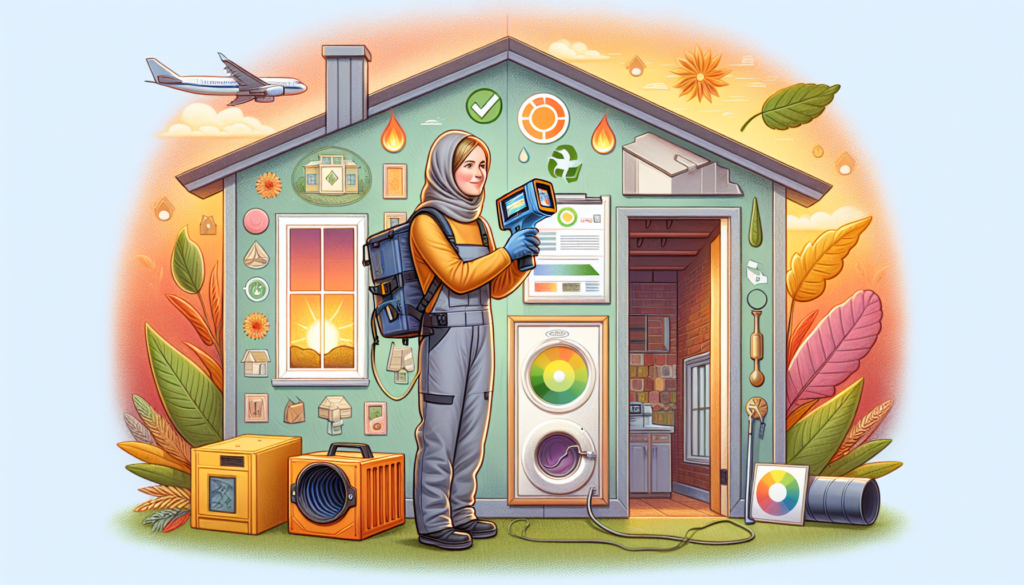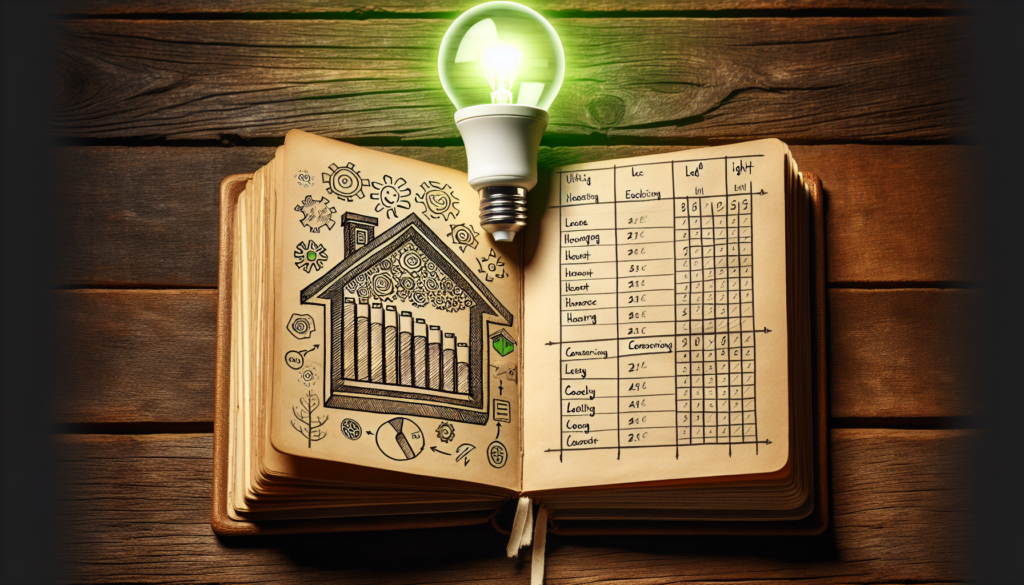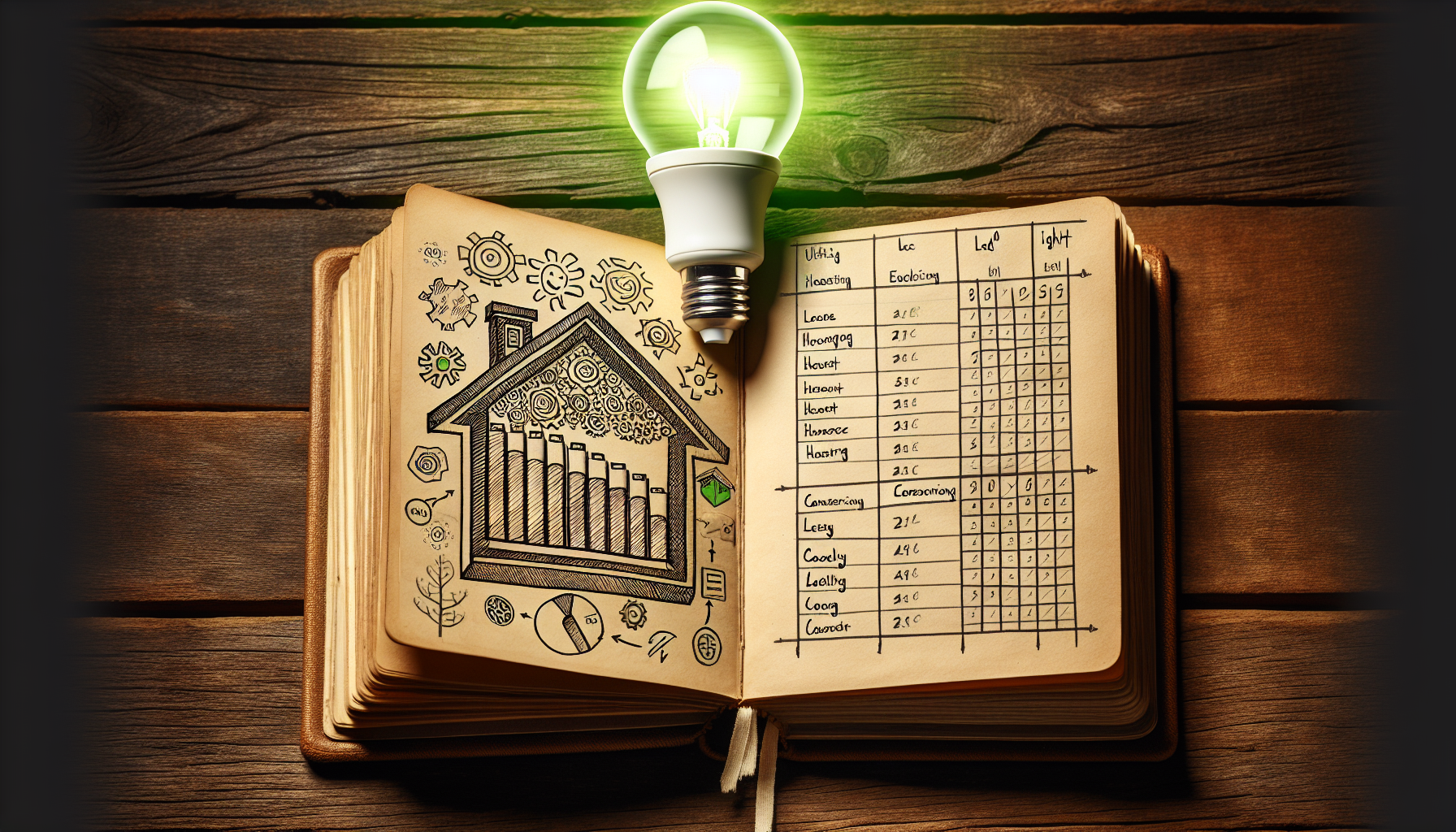Imagine being able to save money on your energy bills while also reducing your environmental impact. Conducting a home energy audit can help you achieve just that. In this article, you will learn how to effectively assess the energy usage in your home and identify areas where you can make improvements. By following these simple steps, you will be well on your way to creating a more energy-efficient and sustainable living space.
What is a Home Energy Audit?
A home energy audit is the process of assessing and evaluating the energy efficiency of your home. It involves a thorough examination of various aspects of your house, such as insulation, doors and windows, lighting, appliances, heating and cooling systems, and more. The primary goal of a home energy audit is to identify areas where energy is being wasted and to recommend energy-saving measures that can help you reduce your energy consumption and lower your utility bills.
Why Should You Conduct a Home Energy Audit?
Conducting a home energy audit is beneficial for several reasons. Firstly, it can help you identify areas in your home that are not properly insulated, have air leaks, or have outdated appliances, which are responsible for energy waste. By addressing these issues, you can significantly improve the energy efficiency of your home, resulting in lower utility bills and increased comfort.
Secondly, a home energy audit allows you to understand how your home utilizes energy and identify any patterns or trends in your energy consumption. This knowledge can help you make informed decisions about energy-saving measures and prioritize areas where improvements are most needed.
Lastly, conducting a home energy audit is an environmentally responsible action. By reducing your energy consumption, you are not only saving money but also decreasing your carbon footprint and contributing to a more sustainable future.

Understanding Energy Efficiency
Before diving into the details of a home energy audit, it is essential to have a basic understanding of energy efficiency. Energy efficiency refers to the ability of a system or device to perform its functions with minimum energy input. In the context of a home, it means maximizing the energy you require for heating, cooling, lighting, and other activities while minimizing unnecessary waste.
Improving energy efficiency can be achieved through various means, such as proper insulation, sealing air leaks, using energy-efficient appliances and lighting, optimizing heating and cooling systems, and adopting smart energy management practices. By employing these measures, you can reduce your energy consumption, lower your utility bills, and create a more sustainable living environment.
Preparation for the Audit
Before starting your home energy audit, there are a few steps you should take to ensure a smooth and effective process.
Gathering Information
Begin by collecting relevant information about your home, such as the age of the house, the materials used in construction, and any previous renovations or upgrades. You may also want to gather your energy bills from the past year to assess your energy consumption patterns.
Assembling Tools and Materials
To perform a thorough audit, you will need some essential tools and materials. These may include a flashlight, a ladder, a tape measure, a thermal imaging camera or infrared thermometer, a blower door fan, weatherstripping materials, a notebook, and a pen or pencil. Having these items at hand will assist you in conducting a comprehensive assessment of your home’s energy efficiency.

Exterior Inspection
The first part of the audit involves examining the exterior of your home to identify any potential areas of energy loss or inefficiency.
Checking Insulation
Inspect the insulation in your walls, attic, and crawlspaces. Look for gaps, missing insulation, or damaged areas. Proper insulation is crucial in maintaining a comfortable indoor temperature and preventing energy loss.
Examining Doors and Windows
Check the condition of your doors and windows. Look for any cracks, gaps, or damaged weatherstripping that could affect the energy efficiency of your home. Properly sealed doors and windows help to prevent air leaks and improve insulation.
Inspecting the Roof
Examine your roof for any signs of damage or deterioration. Inspect the flashing, shingles, and chimney to ensure they are in good condition. A well-maintained roof plays a significant role in maintaining the energy efficiency of your home.
Observing the Foundation
Inspect the foundation of your home for cracks or gaps that could allow air to enter or escape. Any openings in the foundation should be properly sealed to prevent energy waste.
Interior Inspection
Once you have completed the exterior inspection, move on to assessing the interior of your home.
Assessing Air Leaks
Identify areas of potential air leaks such as gaps around doors and windows, electrical outlets, and vents. Use weatherstripping or caulking to seal these openings and prevent energy loss.
Reviewing Insulation
Check the insulation in your walls, floors, and ceilings. Look for gaps or thin spots that may require additional insulation. Adequate insulation helps to maintain a consistent temperature and minimize energy waste.
Evaluating Lighting and Appliances
Assess your lighting fixtures and determine if any outdated incandescent bulbs can be replaced with energy-efficient LED bulbs. Additionally, evaluate your appliances for energy efficiency ratings. Consider upgrading to ENERGY STAR certified appliances, which consume less energy and are more environmentally friendly.
Investigating Heating and Cooling Systems
Inspect your HVAC system, including the furnace, air conditioner, and ductwork. Ensure that filters are clean and in good condition. Consider investing in a programmable thermostat to optimize your heating and cooling settings and save energy.
Energy Usage Analysis
Once you have completed the inspection, analyze your energy bills and consumption patterns to understand your home’s energy usage. Identify any trends or spikes in energy consumption and compare them with your audit findings. This analysis will help you prioritize energy-saving measures and determine the potential savings.
Identifying Energy Saving Opportunities
Based on the findings of your energy audit, there are several opportunities to save energy and reduce your utility bills.
Using Energy Efficient Lighting
Replace traditional incandescent bulbs with energy-efficient LED bulbs. LED bulbs use significantly less energy and have a much longer lifespan, making them a cost-effective lighting option.
Improving Insulation
Address any gaps or thin spots in your insulation by adding more insulation as necessary. Proper insulation helps to maintain consistent indoor temperatures and reduces the need for excessive heating or cooling.
Upgrading Appliances
Consider replacing old, energy-guzzling appliances with ENERGY STAR certified models. ENERGY STAR appliances are designed to consume less energy while maintaining high performance standards, resulting in significant energy savings.
Optimizing Heating and Cooling Systems
Invest in a programmable thermostat to regulate your home’s temperature efficiently. Adjust temperatures when no one is home or during nighttime to conserve energy. Regularly maintain and service your HVAC system to ensure it operates at maximum efficiency.
Calculating Potential Savings
By implementing the energy-saving measures identified during your audit, you can calculate the potential savings. Consider factors such as the estimated energy reduction from each measure, the cost of implementing the changes, and the payback period. This analysis will help you determine the most cost-effective measures to pursue.
Implementing Energy Saving Measures
Once you have prioritized the energy-saving measures, it’s time to start implementing them.
Sealing Air Leaks
Use weatherstripping, caulking, or other sealing materials to address any identified air leaks. Pay attention to windows, doors, electrical outlets, and any other areas prone to air leakage.
Adding Insulation
Install additional insulation in areas with inadequate coverage to improve energy efficiency. This may include adding insulation to your walls, attic, floors, or crawlspaces. Consult with a professional or research recommended insulation levels for your climate zone.
Upgrading Light Bulbs
Replace outdated incandescent bulbs with energy-efficient LED bulbs. LED bulbs use less energy and last longer, making them a sustainable and cost-effective lighting choice.
Installing Programmable Thermostats
Invest in a programmable thermostat to optimize your heating and cooling settings. Set temperature adjustments based on your daily schedule and preferences, ensuring energy is not wasted when you’re away from home or sleeping.
Replacing Inefficient Appliances
As your budget permits, upgrade outdated and unenergy-efficient appliances with ENERGY STAR certified models. Look for appliances with high energy efficiency ratings to ensure significant energy savings over time.
By implementing these energy-saving measures, you can significantly reduce your energy consumption, lower your utility bills, and create a more sustainable and comfortable living environment.
In conclusion, conducting a home energy audit is a practical and beneficial exercise for every homeowner. It allows you to identify energy-wasting areas in your home and make informed decisions about energy-saving measures. By improving insulation, sealing air leaks, upgrading appliances, and optimizing heating and cooling systems, you can achieve significant energy savings and contribute to a greener future. So grab your tools, gather the necessary information, and take the first step towards a more energy-efficient home!

